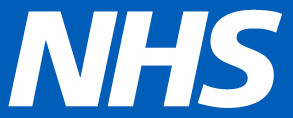Case study: North Tees and Hartlepool NHS Foundation Trust
What we did
- The talent management pilot took place in the Education & Organisation Development Directorate
- 45 staff from a range of professional backgrounds took part in the pilot, including clerical and administration, nursing and midwifery, HR and senior management.
- The E&OD Senior Management Team decided that the staff on Agenda for Change bands 1 – 5, (24 members of staff) would use the Maximising Potential Tool and staff bands 6 and above (18 staff in total) would use the Talent Conversation Tool in the pilot.
- E&OD Directorate staff had already undertaken their annual appraisal and for the purposes of this pilot, all staff within the directorate had a standalone ‘Talent Conversation’ with their line manager, which was not part of their annual appraisal
- Each employee had a one hour ‘Talent Conversation’ with their line manager
- During the conversation the employee and manager would mutually agree where the employee sat on the tool, based on their performance and behaviour expectations.
- Prior to the talent management conversation all staff were given a copy of the pilot evaluation form which was completed before and after the talent conversation. Once all the talent conversations had taken place, the data from the talent conversation forms were collected and analysed. It is planned that all outcomes from the talent conversations will be peer reviewed by the E&OD senior management team.
Things we learnt
- It is important to recognise those employees that are always meeting performance and behaviour expectations and ensure these employees are developed in their current role.
- A number of employees found that the conversation tool has given them access to the development opportunities for their current role or a future role.
- A number of employees have been identified for a more senior post or stretch opportunity in the future following their conversation.
- Managers found the conversation process useful in terms of helping identifying learning and development needs for employees, identifying talent or potential for leadership and in terms of improving communication.
What worked well
- Both managers and employees found the documentation easy to understand.
- Staff felt that the face to face briefings were a useful way to communicate information regarding the planned pilot.
- Specific guidance was available to help individuals and managers address development opportunities.
- Recognition of the importance of those staff in the ‘Always Meets Performance / Behaviour Expectations’ section of the tools.
Challenges to implementing the process
- No significant challenges were encountered, but feedback suggested; only one tool should be used in the organisation, either the Maximising Potential Conversation Tool or the Talent Conversation Tool.
- The talent management process should be integrated into the appraisal process of the Trust.
- Staff felt that a web page and video demonstration would be beneficial to aid the conversations.
- Maximising Potential Conversation Tool was useful as it rated behaviour and performance separately, however did not address an individual’s readiness to move.
- The Talent Conversation Tool was useful because it looked at an individual’s readiness to move on, but found that rating behaviour and performance together was complicated.
- A further long term evaluation of the pilot and expected outcomes would be useful 3 – 6 months after the talent conversations have taken place.


Please sign in or register to make a comment.